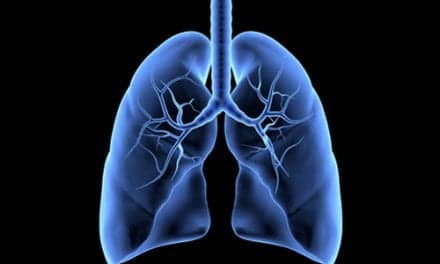Compliance with proper self-cleaning protocols may enable trach patients to live independently and prolong their lives
Seven days post placement of a SCOOP transtracheal oxygen catheter via the FastTrackTM method, a 77-year-old man called the special procedures respiratory therapist complaining of shortness of breath and stated he was unsure of whether he was getting his oxygen. The therapist instructed him to leave the SCOOP catheter in place, but to switch to an oxygen cannula and come in for evaluation. The patient presented on an oxygen cannula at 8 lpm. Pulse oximetry revealed a Spo2 of 91%.

The respiratory therapist inserted a wire guide to switch out the SCOOP catheter and could not move it in or out. She cleaned the catheter in place, instilling normal saline and advancing the cleaning rod alternatively. The patient became increasingly short of breath and was placed on a non-rebreathing mask with a Spo2 of 90% noted. The patient received a nebulized breathing treatment with albuterol, and the respiratory therapist continued to clean the catheter in place. After 1 hour of care, the patient bent forward and coughed, gagged, and expectorated a massive sputum plug, fully 5.5 cm in length, which was placed in a specimen container and sent to the laboratory for examination. The catheter could then be removed and replaced. Although the patient was physically exhausted from the ordeal, he quickly recovered and was placed on 5 lpm SCOOP with a Spo2 of 91%.
The respiratory therapist reviewed cleaning in place instructions. The patient was discharged to his home with instructions to increase his cleaning in place regime from twice daily to at least three times per day until the tract matured.
Following lengthy and intensive reinstruction, the patient learned to manage his SCOOP catheter care independently, and continues to benefit from SCOOP TTOT at 5 lpm, with acceptable Spo2 levels and no subsequent problems. SCOOP catheters are approved by the US Food and Drug Administration for flow rates up to 12 lpm, literally allowing the patient additional room to breathe as his oxygen demands increase.
Discussion
Both the chronic and acute management of this patient was very challenging for several reasons. He had reached or surpassed the limits of an oxygen cannula to effectively maintain acceptable oxygen saturations regardless of flow rate. His desire to live independently was compromised by his advancing age and deteriorating health. His diminished ability to learn and demonstrate new skills presented a challenge to the clinical care team.
When confronted with a SCOOP catheter that could not readily be removed, the respiratory therapist correctly avoided the temptation to forcibly extract it. Instead, she patiently and persistently followed the cleaning in place protocol. The massive plug was eventually dislodged and expectorated, much to the patient’s relief. Had the therapist been unsuccessful in dislodging the plug, an intervention with fiber-optic bronchoscopy would have been necessary.
The etiology of the massive plug is suspicious. Small mucous balls on the SCOOP catheter are not uncommon, but massive gelatinous plugs are virtually unheard of. It is possible that the plug resulted from a combination of factors including the placement of the SCOOP, arid climate, and the patient’s poor compliance with the cleaning in place protocol. The clinicians involved in the patient’s care did not think it was likely that such a massive plug would form in so short a time post-SCOOP placement, however. The fact that the patient had been very recently hospitalized with an acute exacerbation of chronic obstructive pulmonary disease and had a history of hemoptysis suggests that the plug may have already been residing in an airway and merely became lodged on the end of the SCOOP catheter.
Although the patient was slow and reluctant to learn the SCOOP self-care routine, and managing the SCOOP catheter challenged his limited manual dexterity, the special procedures respiratory therapists were gradually and eventually able to assist him in achieving complete success.
The combined skills of the surgeon, pulmonologist, respiratory therapists, and pulmonary rehabilitation team worked in concert to achieve the best possible outcome for an extremely challenging end-stage COPD patient with limited options in life. Studies have shown that patients receiving oxygen through a SCOOP transtracheal catheter live an average of 2 years longer than patients who are clinically similar but using a nasal cannula.
For this patient, successful implementation of SCOOP TTOT, combined with pulmonary rehabilitation, may have been the key factors in fulfilling his wish not only to live independently, but to continue living at all. He continues to live independently, has had no recurrent hospitalizations, and continues to participate in a pulmonary rehab program.
John A. Wolfe, RRT, CPFT, is a clinical specialist at North Colorado Medical Center, Greeley, Colo, and is a member of RT’s editorial board.








